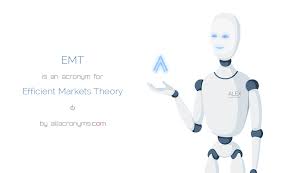In a single-period model it is certainly permissible to specify exogenously the joint probability distribution of the end-of-period values of the assets if we think of these assets as
previously committed fixed investments which cannot be reversed – for example fields of
already planted seeds. If trading takes place only at equilibrium prices, then this is equivalent to specifying the form of the joint probability distribution of returns as well as. If we
think instead of a “seed” economy with assets representing various fields of differing fertility, it is perfectly all right to specify the returns distributions directly, provided that they
have stochastic constant returns to scale. In either case the equilibrium solution will not be
materially affected. The only remaining issue is whether the equilibrium can be affected by
investors making financial contracts (side bets) among themselves.
We have studied four single-period models of asset pricing: the CAPM relation and the
related distributional based separation model , the general utility relation
and the associated utility-based separation model , the arbitrage pricing
theory , and the complete markets model.
The creation of new financial securities clearly cannot affect the equilibrium reached
in a complete market because the “new” assets must be already spanned by the original
marketed assets which already provided insurance against each state. Similarly, the equilibrium under taste aggregation cannot be affected by the creation of financial securities
because the equilibrium description is completely independent of any assumptions about
returns distributions (provided only that they are sufficiently well behaved so that expected
utility is defined).
The reason is basically the same as for complete markets. If all investors have utility
functions which are sufficiently similar (e.g., exponential) to permit aggregation, then the
market must be effectively complete (Pareto optimal) even prior to the creation of the financial assets. In this case all investors agree on the “shadow” prices for the states not
insurable with the original assets and therefore must assess the same (utility) value for any
possible financial asset. That is, no investor will have any motive to trade the new assets or
hold any amount of them in his portfolio except zero.
With complete markets any possible financial asset is already in existence. With utility
aggregation any possible financial asset (in zero net supply) is irrelevant.
Click here for government certification in Accounting, Banking & Finance





9 Comments. Leave new
Great work..!
Good work. The way the joint probability distribution, utility functions and creation of financial assets have been explained is commendable.
Well written.
This is very well explained. It shows your depth of knowledge in finance. Great one, Sneh!
Very well written
Amazingly written
This is written so wonderfully. No wonder, you have an in-depth knowledge In finance. Great piece of work.
Good effort!
well written! that’s the job of a CFA!